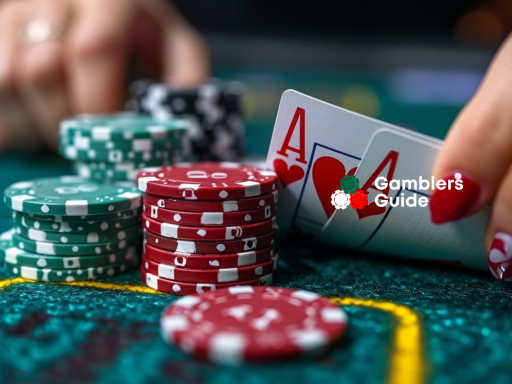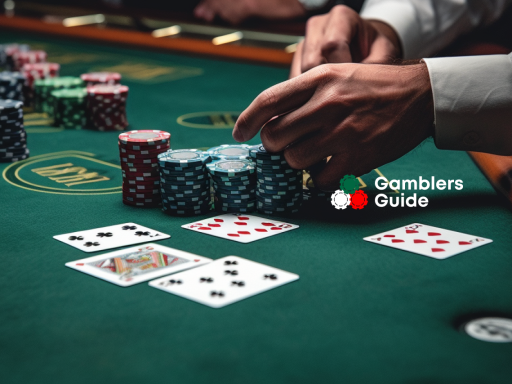Insurance is one of the most ubiquitous side bets in blackjack. Its essence is relatively simple to catch: a player additionally pays 50% of their initial stake if the opponent shows an Ace as their first card. If a croupier’s hand results in blackjack, a gambler gets reimbursement (a facultative bet pays out 2:1). The supplementary feature won’t help you earn net profit but protect you from a dent on your bankroll.
How does the insurance in the table game work? Let’s explore this side bet’s practical application, as well as consider its peculiarities, ins, and outs.
1. It turns out that the croupier’s face-up card is an Ace
The only case to benefit from the described feature is when the dealer’s open card is an Ace. Are you confident that the croupier is holding a natural blackjack? Don’t hesitate to utilize a side wager to protect yourself from potential money losses in this case.
Is it always reasonable to pick blackjack insurance? Pro enthusiasts recommend turning to this approach in the following circumstances:
- You are good at counting cards and can determine if the opponent has a blackjack with a strong likelihood. Also, you must have a high count, meaning your own hand of 15 points or more.
- You are a novice playing with small bets and avoiding extra risk. Utilizing an additional bet in blackjack can aid you in learning various strategies and building your own one with minimum losses.
- Conversely, you prefer high wagers and don’t want to lose money if the dealer has a strong chance of winning.
Some gamers take part in alluring blackjack tournaments with impressive prize pools. To move to the next round, they should frequently increase their chip stack. Using an insurance stake can be considered the least risky option.
2. You activate your protective bet
As a rule, this extra bet will cost you half the original stake. For instance, you have initially wagered $20. Therefore, an insurance stake will price you $10. In live blackjack, the croupier personally offers participants to purchase a side bet. As for RNG-based games, the system notifies gamblers about the opportunity to get an additional stake. Traditionally, the physical or web table contains a particular insurance line above the original stakes.
As usual, after accepting an additional bet, you can decide between two standard options:
- To stand — to refuse to get a new card in your hand.
- To hit — to ask for another card to your total.
The most acceptable way depends on your current number of points collected with the first two cards. Have you been lucky enough to accrue 17 or more points? In the present case, leaving your hand untouched seems like the best solution.
3. The dealer displays their hand value
When entertaining with the protective bet, there can be two scenarios depending on the croupier’s total:
- The second dealer’s card turns out to be 10 points, meaning your opponent has blackjack. Your initial stake loses, but an insurance wager helps you break even by paying off 2 to 1. For example, your primary wager was $20, and an extra bet was $10 ($30 total spending). Eventually, you get a compensation of $10 + $10 + $10 = $30, and go to zero.
- Your suspicions were wrong, and the croupier has got less than 21 points. The insurance bet is burned since conditions are not met, but you can continue the hand on the basic rules.
Professionals encourage beginners to activate side bets under exceptional circumstances. The fact is that the insurance assists you with bankroll protection but is unprofitable in the long run. You can recover your bet, although you should consider other strategies to consistently increase your budget and reach the desired goals.
4. Winnings are credited, and a new competition begins
Blackjack is a cyclical entertainment, and after the round with the insurance activated, you can go on your gambling journey on the usual terms. The croupier or RNG collects and shuffles the cards and a new battle starts.
Three Nuances of Blackjack Insurance to Keep in Mind
Before trying your hand at gambling with side bets, pay attention to several professional conclusions:
- The optional stake has a 3% casino advantage, which looks appealing. However, this wager pays off when the croupier has a 10-point card, which has a likelihood of 30% only.
- Considering the number of decks is crucial. The more decks are involved in the game, the less the chance that your insurance stake wins. For beginners, it’s strongly recommended to start a blackjack journey with single-deck versions. Moreover, the house advantage is lowest in this case.
- There is no 100% guarantee of winning, even with an extra wager. Suppose your side bet is burned, and you go on your round on basic rules. If the dealer’s hand appears to be better than yours or you get busting (more than 21 points), you’ll lose all your money on this round.
Some enthusiasts are sure the insurance diverts attention from the player’s hand and negatively impacts their main blackjack strategy. For long-term success, it’s vital to focus on your hand rather than concentrate on the dealer’s ace.
In conclusion, note that only particular blackjack versions offer an opportunity to activate protective stakes. Some platforms and casino developers propose such a feature as a bonus only. Side bets are more common in blackjack with six or eight decks.






